This summer, our field technicians are hard at work studying the nesting ecology of the elusive spotted turtle. Through this research, we aim to better understand key aspects of their reproductive biology, including nest site selection, nest success, hatchling sex ratios, and hatchling vitality.
Spotted turtles are among the smallest turtle species in Massachusetts and are notoriously difficult to locate in the wild. Their nesting sites are often hidden deep within wetlands, leaving little to no trace behind. So, with all these challenges, how do we study their nests?
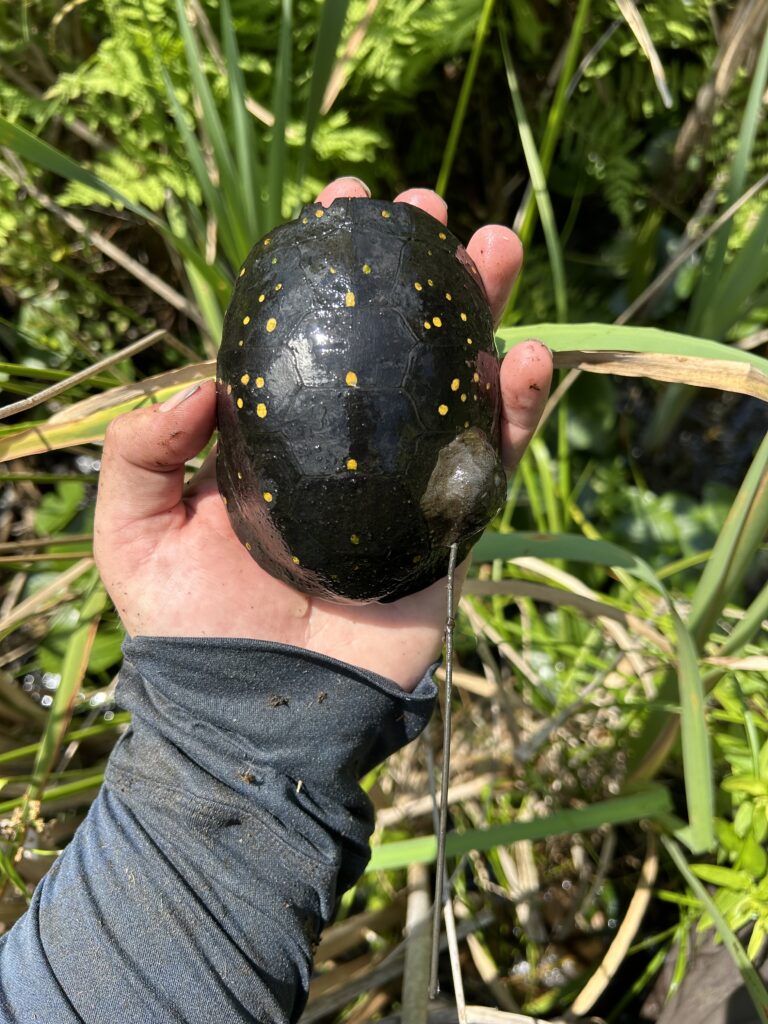
Our work begins in the spring. Technicians set baited traps across our research sites to capture as many turtles as possible. When an adult female is caught, we attach a small radio transmitter to her shell. This device emits a signal that grows stronger as we get closer—a technique known as radio telemetry. We then monitor these females closely as nesting season approaches in June.
During June, we regularly check the weight of each radio-tagged female and gently palpate her abdomen to detect hardened eggs. In addition to the usual palpation method, with the help of our Zoo New England Veterinarian Team, we we’re actually able to radiograph these individuals this season. This not only confirmed which females were gravid, but gave insight as to how calcified the eggs were, which can provide us with a better sense of when she might be ready to nest. Once eggs are confirmed, we move to the next phase: thread bobbin tracking.
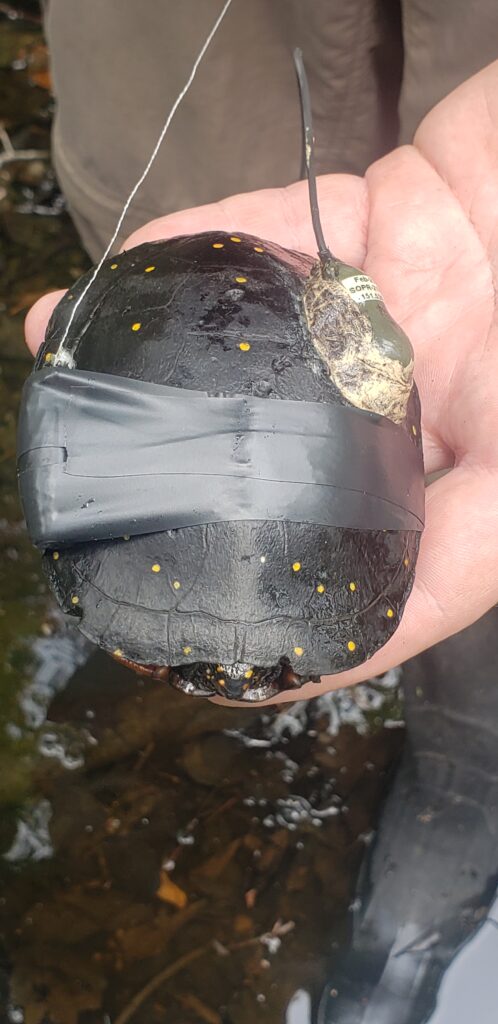
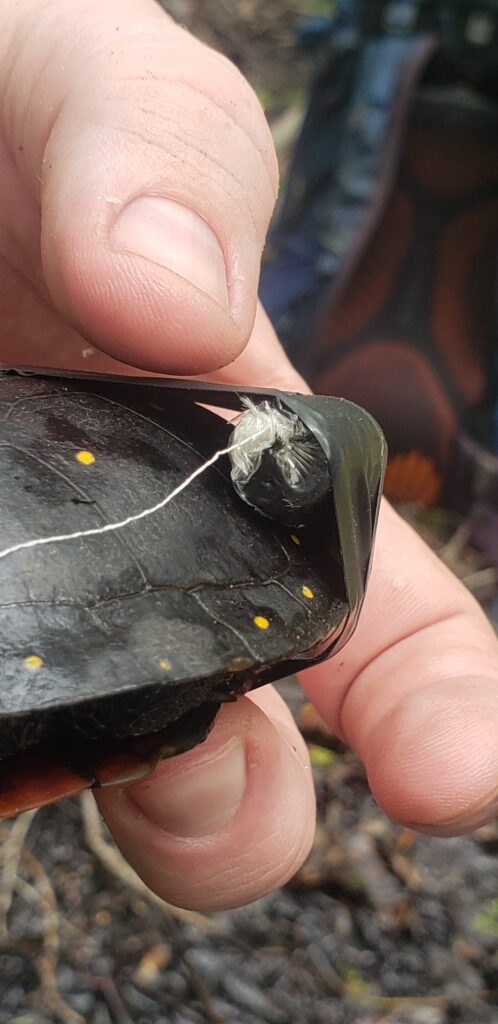
This method involves attaching a spool of thread to the turtle’s carapace (top shell) and anchoring the thread to a fixed point. As the turtle moves, the thread unspools, leaving a trail we can follow. Each day, we replace the bobbin and continue tracking until we observe a significant drop in weight and no more detectable eggs—signs that she has nested. We then follow the thread to locate the nest.
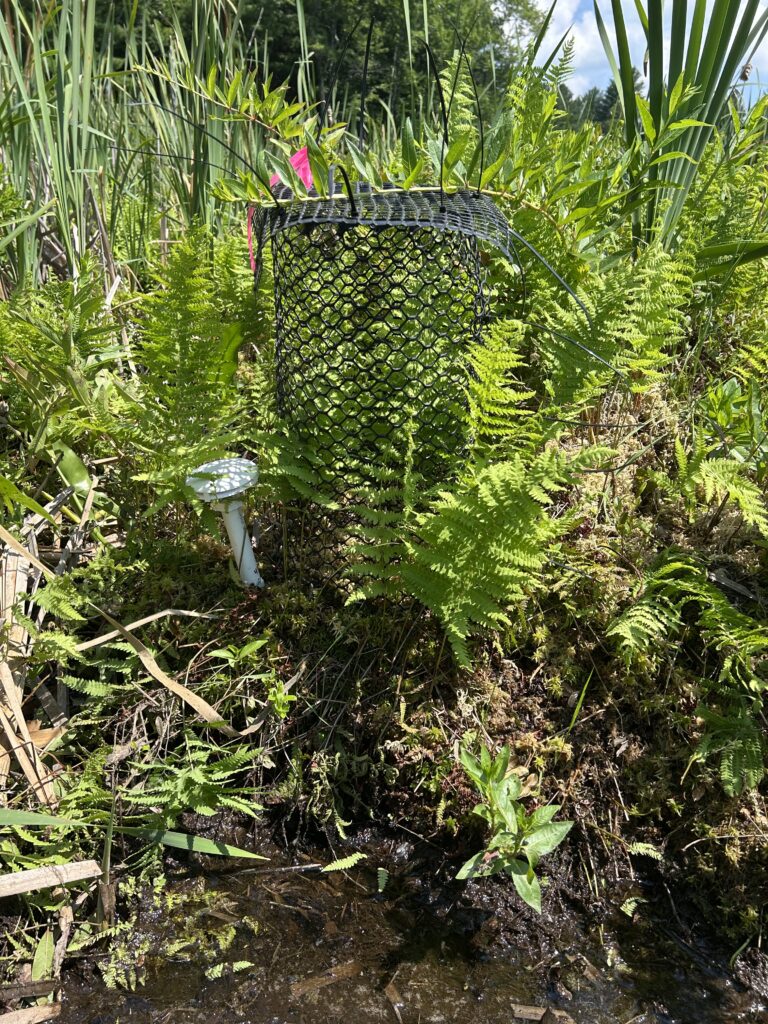
Finding a nest is a major milestone. Once located, we carefully count and measure the eggs—recording their length, width, and weight. We also insert temperature loggers both inside the nest chamber and in the surrounding soil. These loggers collect hourly data on temperature and humidity, which are crucial for understanding temperature-dependent sex determination. In spotted turtles, cooler nest temperatures tend to produce more males, while warmer temperatures yield more females. As climate change alters environmental conditions, this balance could shift, potentially impacting population dynamics. Throughout the summer, we monitor the nests closely until the eggs hatch in late summer.
Our team’s dedication paid off. We successfully protected six nests this season. Nest sizes ranged from three to nine eggs—though the nine-egg nest may be a double nest, where two females laid eggs in the same site. This rare occurrence is an exciting natural history note we’re eager to explore further.
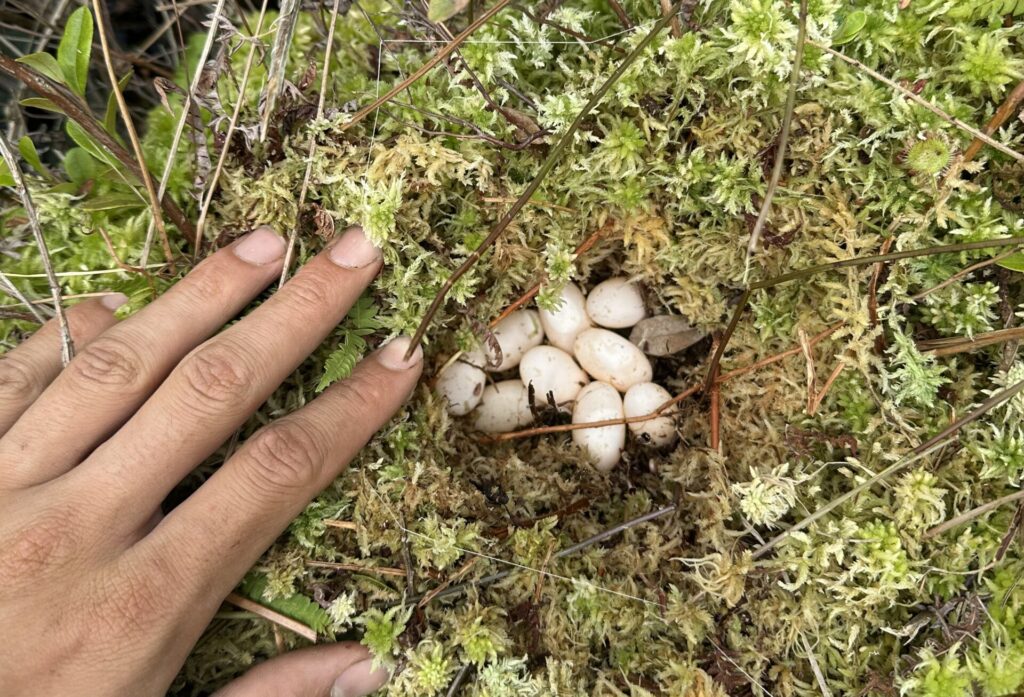
Stay tuned for our next update, where we’ll share how we’re head-starting hatchlings to give them the best chance at survival!
